Thomas Clarkson and the Abolition of the Slave Trade
One of the great movements for liberty was the abolitionist movement in the late 18th and 19th centuries. It was led by figures like the Quaker Thomas Clarkson who successfully agitated for the abolition of the slave trade in Britain. He wrote histories and other works which exposed the cruelty and inhumanity of slavery. In his History of the Abolition of the Slave-trade he used illustrations very effectively in order to make his case, as these examples show. One of the most striking illustration is a “map” showing all the intellectual streams which flowed into the movement which led to the abolition of the slave trade in 1808 and then ultimately the abolition of slavery itself in 1833.
Source: Thomas Clarkson, The History of the Rise, Progress, and Accomplishment of the Abolition of the African Slave-Trade by the British Parliament, 2 vols. (London: L. Taylor, 1808). 2 vols.
A Selection of Images
The following images appear in Clarkson’s book along with the large, fold-out “map” which is included below.
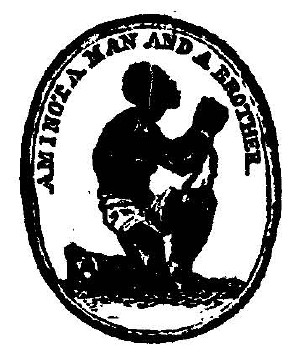
The image commonly used used in anti-slavery propaganda.

An illustration showing the chains and manacles used to restrain slave on board the ships which transported them to America and the Caribbean.
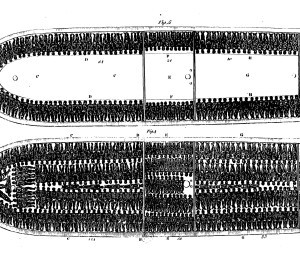
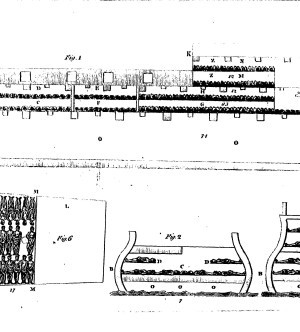
A commonly used illustration of a slave ship showing the cramped quarters in which the slaves were chained in the trip across the Atlantic. It was first used to expose these conditions on board ship in A Broadside sheet, “Description of a Slave Ship” (1789). A larger color version of this image with a transcription of the commentary which accompanied it can be found here.
The River of the Abolitionist Movement
In vol. 1, Chapter XI of Thomas Clarkson’s The History of the Rise, Progress, and Accomplishment of the Abolition of the African Slave-Trade by the British Parliament , 2 vols. (London: L. Taylor, 1808) Clarkson explains the meaning behind the elaborate “map” showing the various intellectual streams which flowed into the gulf of the “abolition of slavery”.
Note that Clarkson’s own name appears as one of the tributaries in the bottom right hand corner, along with Jefferson and other Americans. See the snapshot of this region of the map.
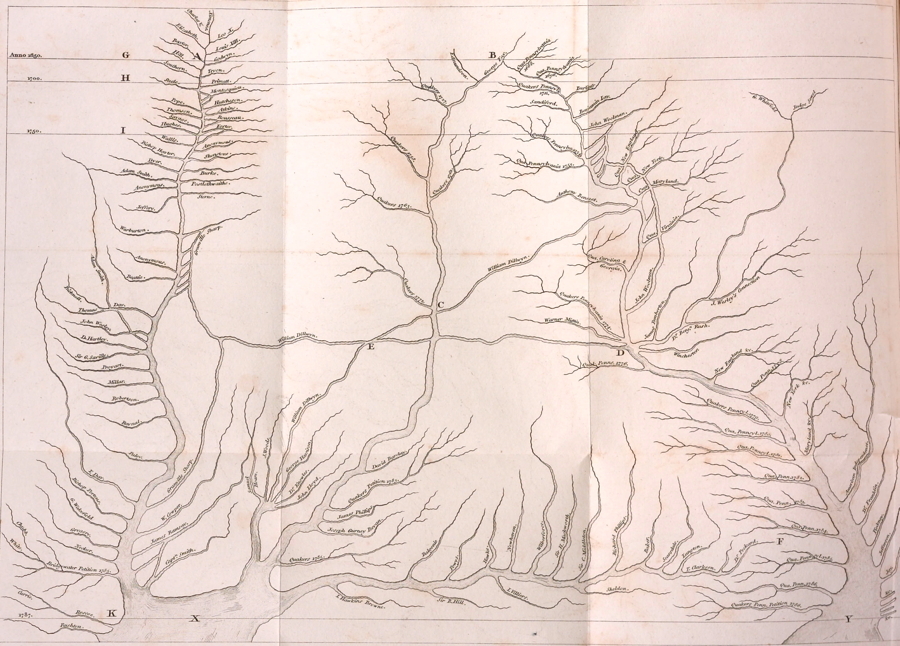
[See a much larger version of this file 3488 px]
Clarkson’s name is visible in this enlarged view of the bottom right hand corner of the map:
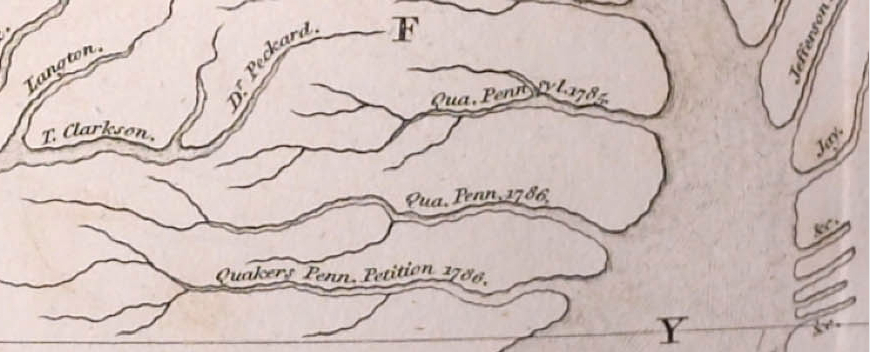
Chapter XI. The preceding history of the different classes of the forerunners and coadjutors, to the time of the formation of the committee, collected into one view by means of a map—Explanation of this map—and observations upon it.
CHAPTER XI. The preceding history of the different classes of the forerunners and coadjutors, to the time of the formation of the committee, collected into one view by means of a map—Explanation of this map—and observations upon it. As the preceding history of the different classes of the forerunners and coadjutors, to the time of their junction, or to the formation of the committee, as just explained, may be thought interesting by many, I have endeavoured, by means of the annexed map, so to bring it before the reader, that he may comprehend the whole of it at a single view. The figure beginning at A and reaching down to X represents the first class of forerunners and coadjutors up to the year 1787, as consisting of so many springs or rivulets, which assisted in making and swelling the torrent which swept away the Slave-trade. The figure from B to C and from C to X represents the second class, or that of the Quakers in England, up to the same time. The stream on the right-hand represents them as a body, and that on the left, the six individuals belonging to them, who formed the committee in 1783. The figure from B to D represents the third class, or that of the Quakers in America when joined with others in 1774. The stream passing from D through E to X shows how this class was conveyed down, as it were, so as to unite with the second. That passing from D to Y shows its course in its own country, to its enlargement in 1787. And here I may observe, that as the different streams which formed a junction at X, were instrumental in producing the abolition of the Slave-trade in England, in the month of March 1807, so those, whose effects are found united at Y, contributed to produce the same event in America, in the same month of the same year. The figure from F to X represents the fourth class up to 1787. X represents the junction of all the four classes in the committee instituted in London on the twenty-second day of May, 1787. The parallel lines G, H, I, K, represent different periods of time, showing when the forerunners and coadjutors lived. The space between G and H includes the space of fifty years, in which we find but few labourers in this cause. That between H and I includes the same portion of time, in which we find them considerably increased, or nearly doubled. That between I and K represents the next thirty-seven years. But here we find their increase beyond all expectation, for we find four times more labourers in this short term, than in the whole of the preceding century. In looking over the map, as thus explained, a number of thoughts suggest themselves, some of which it may not be improper to detail. And first, in looking between the first and second parallel, we perceive, that Morgan Godwyn, Richard Baxter, and George Fox, the first a clergyman of the Established Church, the second a divine at the head of the Nonconformists, and the third the founder of the religious society of the Quakers, appeared each of them the first in his own class, and all of them about the same time, in behalf of the oppressed Africans. We see then this great truth first apparent, that the abolition of the Slave-trade took its rise, not from persons, who set up a cry for liberty, when they were oppressors themselves, nor from persons who were led to it by ambition, or a love of reputation among men, but where it was most desirable, namely, from the teachers of Christianity in those times. This account of its rise will furnish us with some important lessons. And first, it shows us the great value of religion. We see, when moral disorders become known, that the virtuous are they who rise up for the removal of them. Thus Providence seems to have appointed those, who devote themselves most to his service, to the honourable office of becoming so many agents, under his influence, for the correction of the evils of life. And as this account of the rise of the abolition of the Slave-trade teaches us the necessity of a due cultivation of religion, so it should teach us to have a brotherly affection for those, who, though they may differ from us in speculative opinions concerning it, do yet show by their conduct that they have a high regard for it. For though Godwyn, and Baxter, and Fox, differed as to the articles of their faith, we find them impelled by the spirit of christianity, which is of infinitely more importance than a mere agreement in creeds, to the same good end. In looking over the different streams in the map, as they are discoverable both in Europe and America, we are impressed with another truth on the same subject, which is, that the Christian religion is capable of producing the same good fruit in all lands. However men may differ on account of climate, or language, or government, or laws, or however they may be situated in different quarters of the globe, it will produce in them the same virtuous disposition, and make them instruments for the promotion of happiness in the world. In looking between the two first parallels, where we see so few labourers, and in contemplating the great increase of these between the others, we are taught the consoling lesson, that however small the beginning and slow the progress may appear in any good work which we may undertake, we need not be discouraged as to the ultimate result of our labours; for though our cause may appear stationary, it may only become so, in order that it may take a deeper root, and thus be enabled to stand better against the storms which may afterwards beat about it. In taking the same view again, we discover the manner in which light and information proceed under a free government in a good cause. An individual, for example, begins; he communicates his sentiments to others. Thus, while alive, he enlightens; when dead, he leaves his works behind him. Thus, though departed, he yet speaks, and his influence is not lost. Of those enlightened by him, some become authors, and others actors in their turn. While living, they instruct, like their predecessors; when dead, they speak also. Thus a number of dead persons are encouraging us in libraries, and a number of living are conversing and diffusing zeal among us at the same time. This, however, is not true in any free and enlightened country, with respect to the propagation of evil. The living find no permanent encouragement, and the dead speak to no purpose in such a case. This account of the manner in which light and information proceed in a free country, furnishes us with some valuable knowledge. It shows us, first, the great importance of education; for all they who can read may become enlightened. They may gain as much from the dead as from the living. They may see the sentiments of former ages. Thus they may contract, by degrees, habits of virtuous inclination, and become fitted to join with others in the removal of any of the evils of life. It shows us, secondly, how that encouraging maxim may become true, That no good effort is ever lost. For if he, who makes the virtuous attempt, should be prevented by death from succeeding in it, can he not speak, though in the tomb? Will not his works still breathe his sentiments upon it? May not the opinions, and the facts, which he has recorded, meet the approbation of ten thousand readers, of whom it is probable, in the common course of things, that some will branch out of him as authors, and others as actors or labourers, in the same cause? And, lastly, it will show us the difficulty (if any attempt should be made) of reversing permanently the late noble act of the legislature for the abolition of the Slave-trade. For let us consider how many, both of the living and the dead, could be made to animate us. Let us consider, too, that this is the cause of mercy, justice, and religion; that as such, it will always afford renewed means of rallying; and that the dead will always be heard with interest, and the living with enthusiasm, upon it.